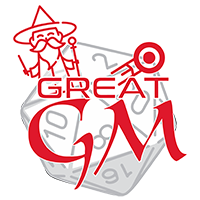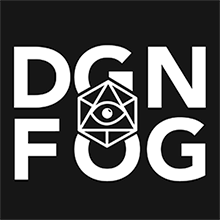Dungeons & Dragons 5e Character Sheet (2020): cody ceps
Remove these ads. Join the Worldbuilders Guild
cody ceps
9 Level (0/64000 XP for level-up) Background Kodermone (cordyceps) Race / Species / Heritage neutral good AlignmentLevel 9
Hit Dice: 9/9
1d6+2 Class 1
13
16
15
17
14
12
Hit Points
Initiative (DEX)
Armor Class (AC)
Prof. Bonus
Speed (walk/run/fly)
Passive Perception
| +8 | Expertise Bonus | |
| +4 | Proficiency Bonus |
| +1 | Strength | |
| +3 | Dexterity | |
| +6 | Constitution | |
| +7 | Intelligence | |
| +2 | Wisdom | |
| +1 | Charisma |
| +3 | Acrobatics | DEX | |
| +2 | Animal Handling | WIS | |
| +3 | Arcana | INT | |
| +1 | Athletics | STR | |
| +1 | Deception | CHA | |
| +3 | History | INT | |
| +2 | Insight | WIS | |
| +1 | Intimidation | CHA | |
| +3 | Investigation | INT |
| +6 | Medicine | WIS | |
| +3 | Nature | INT | |
| +2 | Perception | WIS | |
| +1 | Performance | CHA | |
| +1 | Persuasion | CHA | |
| +3 | Religion | INT | |
| +3 | Sleight of Hand | DEX | |
| +7 | Stealth | DEX | |
| +2 | Survival | WIS |
| Weapon / Attack | AB | Abi | Dmg | Dmg Type |
|---|
Spell Book
NECROMANCER:
Level 1: Spellcasting Though it steadily burns away your very soul, you can cast necromantic spells. Cantrips. You know three Necromancer cantrips of your choice. Dancing Lights, Mending, and Ray of Frost are recommended. Whenever you gain a Necromancer level, you can replace one of your cantrips from this feature with another Necromancer cantrip of your choice. When you reach Necromancer levels 4 and 10, you learn another Necromancer cantrip of your choice, as shown in the Cantrips column of the Necromancer Features table. Spell Slots. The Necromancer Features table shows how many spell slots you have to cast your level 1+ spells. You regain all expended slots when you finish a Long Rest. Prepared Spells of Level 1+. You prepare the list of level 1+ spells that are available for you to cast with this feature. To start, choose four level 1 Necromancer spells. Exhume, Mage Armor, Ray of Sickness, and Silent Image are recommended. The number of spells on your list increases as you gain Necromancer levels, as shown in the Prepared Spells column of the Necromancer Features table. Whenever that number increases, choose additional Necromancer spells until the number of spells on your list matches the number in the Necromancer Features table. The chosen spells must be of a level for which you have spell slots. If another Necromancer feature gives you spells that you always have prepared, those spells don’t count against the number of spells you can prepare with this feature, but those spells otherwise count as Necromancer spells for you. Changing Your Prepared Spells. Whenever you gain a Necromancer level, you can replace one spell on your list with another Necromancer spell for which you have spell slots. Spellcasting Ability. Intelligence is your spellcasting ability for your Necromancer spells. Spellcasting Focus. You can use an Arcane Focus as a Spellcasting Focus for your Necromancer spells.
Level 1: Charnel Touch You can draw upon an inner nexus of necromantic power. You have a pool of Charnel Touch points equal to 5 × your Necromancer level that replenishes when you finish a Long Rest. As a Magic action, you can channel this negative energy through your touch. Choose a number of Charnel Touch points to expend, up to a maximum of 5 × your Proficiency Bonus, and make a melee spell attack against one creature within reach. On a hit, the target takes Necrotic damage equal to the number of points expended. This damage is doubled without expending additional points if the attack roll scores a Critical Hit. If the spell attack misses, the Charnel Touch points aren’t expended.
Level 2: Thralls Unlike other spellcasters, you animate Undead creatures with a portion of your own life force, ensuring obedience. Animate Thralls. You can animate Undead thralls by performing a ritual over the course of 10 minutes, which can be done during a Short Rest. The remains of one or more Medium or Small Humanoids within 30 feet of yourself rise as Undead creatures. These Undead become your thralls, and you maintain control over them indefinitely. Stat blocks for Skeletons, Zombies, and other thralls can be found in the Undead Thralls section at the end of the class description. Combat. You can mentally control all your thralls without an action. If you have the Incapacitated condition, your thralls will move to protect your body from harm, but won’t attack. In combat, your thralls take their turns immediately before or after your turn each round (your choice). All thralls collectively share one Reaction and Bonus Action, which a single thrall can use each round. Attacks and Save DCs. Thralls use your spell attack modifier for their attacks. If one of your thralls forces a creature to make a saving throw, it uses your spell save DC. Healing your Thralls. You can use your Charnel Touch on Undead under your control without making an attack roll. Instead of dealing Necrotic damage, the Undead regains Hit Points equal to the number of Charnel Touch points expended. Maximum Thralls. You can animate and control one thrall that has a Challenge Rating of 1/4. As you gain Necromancer levels, you can animate more thralls. The combined CR of all your thralls can’t exceed the number shown in the CR Total column of the Necromancer Features table, and the total number of thralls under your control can’t exceed the number shown in the Thralls column of the Necromancer Features table. At any time, you can take a Magic action to sever your connection to one or more thralls. Corporeal Undead crumple into a heap and incorporeal Undead flee to the Ethereal Plane. Other Undead. When you cast Animate Dead, Create Undead, or another spell that lets you create or control Undead, the Undead count as your thralls and can be commanded as such. If these thralls exceed your total Challenge Rating or number of thralls, you can immediately sever your connection to any of your existing thralls to stay within these limits. Your thralls can never command or create other Undead. As always, you can’t reanimate Undead that have been reduced to 0 Hit Points. Your Animate Thralls ritual, the Animate Dead spell, and similar magic only affects Humanoid corpses, whereas your thralls are Undead creatures.
Level 2: Dead Space You gain an extradimensional space that can hold up to 12 Medium or smaller corpses, piles of bones, or Undead creatures. The extradimensional space is linked to an item of your choice, such as a bag, a cloak, or a backpack. As a Magic action, you can use the linked item to place a corpse, pile of bones, or willing Undead creature in the extradimensional space, or to dump out contents of your choice from the extradimensional space. Thralls stored in your Dead Space count toward the total number of thralls under your control. The contents land in spaces of your choice within 5 feet of you, or as near to you as possible if those spaces are occupied. You can link any item you can carry to the extradimensional space by performing a ritual over the course of 1 hour which can be done during a Short Rest. The previous item linked to the space becomes disconnected when you link a new one.
Level 3: Necromancer Subclass You gain a Necromancer subclass of your choice. A subclass is a specialization that grants you features at certain Necromancer levels. For the rest of your career, you gain each of your subclass’s features that are of your Necromancer level or lower.
Level 3: Dark Arcana As a Bonus Action, you can expend a spell slot to replenish your Charnel Touch pool. The pool regains points equal to your Intelligence modifier plus 1d8 for each level of the spell slot expended, up to a maximum of your pool’s total.
Level 4: Ability Score Improvement You gain the Ability Score Improvement feat or another feat of your choice for which you qualify. You gain this feature again at Necromancer levels 8, 12, and 16.
Level 5: Animate Dead You always have the Animate Dead spell prepared. When you cast this spell, its casting time is an action instead of 1 minute. You can also create a Spirit using the spell. Additionally, you can animate the corpse of any Medium or Small creature that isn’t Undead, instead of only Humanoids. The resulting Undead always uses the statistics of a Skeleton, Spirit, or Zombie.
Level 5: Critical Spellcasting Your potent Necromancy grants you the following benefits. Critical Failures. When a creature rolls a 1 on the d20 for a saving throw against one of your spells, it suffers a Critical Failure. It fails the save regardless of its modifiers or the spell save DC. If the spell deals damage, you roll all of the spell’s damage dice twice and add them together, then add any relevant modifiers. This additional damage applies only to the creature that rolled a 1. Improved Critical. Your spell attacks can score a Critical Hit on a roll of 19 or 20 on the d20.
Level 7: Improved Thralls Your thralls grow stronger under your control, granting the following benefits. Avoidance. If one of your thralls is subjected to an effect that allows it to make a saving throw to take only half damage, it instead takes no damage if it succeeds on the saving throw, and only half damage if it fails. Necrotic Damage. Whenever one of your thralls deals Bludgeoning, Piercing, or Slashing damage, you can make it deal Necrotic damage instead. Turn Immunity. Your thralls have Immunity to the Charmed and Frightened conditions, and are immune to effects that turn Undead.
CORPSE FLORIST:
Level 3: Corpse Florist Spells Your necromantic ambitions ensure you always have certain spells ready. When you reach a Necromancer level specified in the Corpse Florist Spells table, you thereafter always have the listed spells prepared. Corpse Florist Spells Necromancer Level Spells
3: Barkskin, False Life, Goodberry, Spike Growth
5: Plant Growth, Speak with Plants
7: Blight, Freedom of Movement
9: Reincarnate, Tree Stride
Level 3: Garden of the Grave When you perform your Animate Thralls ritual, you can choose to plant corpse flowers in any of your thralls, causing each such thrall to have the following benefits. Plant. The thrall is a Plant instead of an Undead, but counts as Undead for the purpose of your Necromancer features. Necrosynthesis. Whenever you take a Short or Long Rest, the thrall takes root in the ground and regains Hit Points equal to 1d8 plus your Intelligence modifier.
Level 3: Charnel Entangle When you deal 5 or more damage with Charnel Touch, the target must succeed on a Strength saving throw against your spell save DC or have the Restrained condition until the end of your next turn as weeds and brambles grasp at it.
Level 6: Rotten Seed You can plant your budding corpse flowers in the living as well as the dead. You can take a Bonus Action to toss a seed at an enemy that you can see within 15 feet of you, which makes a Dexterity saving throw. On a failed save, a corpse flower seedling sprouts and burrows into the creature’s flesh. At the start of each of the creature’s turns, it takes 1d8 Necrotic damage and you gain Temporary Hit Points equal to the Necrotic damage dealt. The seedling withers and dies after 1 minute, when the target dies, or when you use this feature again. The damage of this feature changes when you reach level 11 (1d10) and 17 (1d12).
Level 10: Death in Bloom Once on each of your turns when a Medium or Small creature under the effect of your Rotten Seed dies, you can animate that creature’s corpse as a Skeleton, Spirit, or Zombie (your choice) under your control. This Undead counts as one of your thralls and gains the benefit of your Garden of the Grave.
KODORMONE:
Size: kodormone can be small or medium size of your choice
Speed: walk speed of 30 swim speed same as walk speed
Submarine Sight: no penalty to checks underwater. underwater you can see dim light within 60 as if it were bright light, and darkness as if it were dimlight. only see shades of grey underwater no color.
Exoskeleton: base ac of 15 + your dex modifier. a shield works the same. cannot wear armor.
Crustacean Shell: from behind you have an ac of 24. as an action you can roll into a ball making your ac 24 from all angles. while in shell you are prone, your speed is 0 and cant increase, you have disadvantage on dexterity saving throws. you can't take reactions, only action you can take is a bonus action to emerge from the shell. to force you out of the shell an enemy must make a strength (athletics) check, constituted by your strength (athletics) or dexterity (acrobatics) check if the enemy wins you emerge and are prone.
Multiple Limbs: you have a shorter pair of arms in the center of your chest. they have a reach of 5 feet. can lift a number of pounds 5 times your strength score. you can use these limbs to take an additional object interaction each round and hold things. small limbs cannot do anything like attack, use a shield, use a item, use somatic components of a spell.
Kodormone Telepathy: not as psionically adept as thri-kreen cousins however you can still use telepathy to convey your thoughts. you have the psionic ability to transmit your thoughts mentally to willing creatures 80 feet of yourself. a connected creature does not need to share a language to understand your thoughts, but it must understand one language. the link is broken if you/it moves more than 80 feet away, incapacitated, mentally breaks it (no action needed).
Lesser Torpor: dont need sleep and suffer no exhaustion from lack of rest. you spend 6 hours inactive motionless state, you are not unconscious and are still able to see and here as normal.
Features & Traits
Starter: 2 Daggers, Arcane Focus (Rod), Robe, Sack, Shovel, Scholar’s Pack
Thralls:
0 of 3
max cr: 2
Equipment Copper: 0, Silver: 0, Electrum: 0, Gold: 13, Platinum: 0 Money
languages: thrikreen, draconic
proficiencies: Simple weapons
Languages & Proficiencies
™ & © Wizards of the Coast - D & D 5e Character Sheet v2.09, made by Tillerz - Updated: 2025-10-07
To print this sheet: Expand the spell book (if you have any entries there), then click "Print Sheet" at the top, select "Print to PDF" and format A3. Then print the resulting PDF to whichever format you need with "fit to page" selected.
The statblocks of your Weapons, armor and other important/magical equipment
The statblocks of your class features
Statblocks for your familiars, mounts etc.
Statblocks for race/species of the character.
Statblocks for companions, followers and other allies.
Statblocks for your spells.
Statblocks for your Trinkets, businesses, building, castles, empires.





